In a year marked by a devastating pandemic, a chaotic presidential election and the ongoing reckoning with systemic racism in the United States, news of archaeological and cultural discoveries may have been buried under the onslaught of headlines. Spanning disciplines, historical eras, geographic locations and cultures, some finds were first unearthed years ago but only documented now, while others were identified more recently. From a long-lost Rembrandt portrait to a trove of Tudor coins to a biblical fort dated to the time of King David, these were 90 of the most fascinating finds of 2020, as covered by Smithsonian magazine. Listings are bolded and organized by category.
Missing masterpieces
Whether the cause was natural disasters; the ravages of time; or the actions of thieves, iconoclasts and artists alike, countless masterpieces created throughout human history are now lost. Luckily, many creations are still waiting to be found—a fact evidenced by the array of overlooked artworks uncovered in 2020.
At the start of the year, workers restoring St. Stephen’s Cathedral in Vienna discovered a religious triptych, previously masked by layers of centuries-old dirt, thought to be the work of German Renaissance master Albrecht Dürer. Dated to approximately 1505, the three-panel painting depicts Austria’s patron saint, Leopold, flanked by Saint Catherine and Saint Margaret. As scholar Erwin Pokorny told the Art Newspaper in January, the work’s impressive technique offers evidence of its authorship. “[N]one of Dürer’s assistants or followers were able to reach the quality of the underdrawing’s virtuoso brushstrokes,” he added.

Other works spent decades, even centuries, in obscurity, only gaining recognition through conservation efforts that revealed long-overlooked details. After British conservators cleaned a painting of David and Goliath previously attributed to a 17th-century follower of Caravaggio, they spotted a telltale scribble hidden on the hilt of the biblical hero’s sword: the signature of Artemisia Gentileschi, a Baroque artist renowned for her portrayals of women asserting their agency.
A 17th-century portrait of a high-status woman housed at Pennsylvania’s Allentown Art Museum similarly benefited from a routine cleaning, which confirmed the work as a genuine Rembrandt rather than a painting by one of the Dutch artist’s assistants. In Brussels, meanwhile, researchers taking inventory of the Belgian city’s public art collection used dendrochronology—a dating technique that relies on tree rings to gauge artifacts’ age—to conclude that a religious scene long thought to be a copy was actually the oldest known version of Jacob Jordaens’ The Holy Family.
/https://tf-cmsv2-smithsonianmag-media.s3.amazonaws.com/filer/19/6e/196eae11-dc4f-41d3-9f5b-5958567177b8/picassoxray.png)
Chance encounters also yielded surprising artistic finds: During Covid-19 lockdown, Australian conservator Michael Varcoe-Cocks was making the rounds at the shuttered National Gallery of Victoria when he spotted an unfamiliar form in Frederick McCubbin’s The Pioneer, a monumental 1904 painting widely heralded as one of the country’s greatest works. Investigating the matter further, the scholar realized that McCubbin had painted The Pioneer over an earlier work, titled Found. Previously known only through a small black-and-white photograph included in the Impressionist’s scrapbook, Found had spent more than a century hidden beneath the better-known triptych. “If I wasn’t walking through in the dark, with a [flashlight], on my own, I probably wouldn’t have had time to focus on it, make the connection and revisit the X-ray and to rediscover this little photo in a scrapbook we had in storage,” Varcoe-Cocks told the Sunday Herald Sun in November. (McCubbin was far from the only artist to reuse old canvases: As researchers reported over the summer, X-ray and infrared imaging scans identified a Neoclassical scene beneath Pablo Picasso’s 1922 Still Life—yet another example of the Cubist painter’s habit of “obscuring his artworks’ past lives,” according to Smithsonian’s Nora McGreevy.)
Finally, this fall, a New Yorker visiting the Metropolitan Museum of Art’s Jacob Lawrence exhibition noticed distinct similarities between the African American artist’s Modernist creations and a panel she’d seen in her neighbors’ living room. The painting, acquired for a modest sum at a 1960 Christmas charity auction, turned out to be one of five missing panels from Lawrence’s Struggle: From the History of the American People series; the 1956 work—on loan from its astonished owners—joined the rest of the extant panels for the remainder of the exhibition.
Ancient art
The missing masterpieces detailed above owe their significance to their famous creators. But scholars also value millennia-old artworks crafted by anonymous artists who inadvertently offered enduring glimpses into ancient cultures. A stunning fifth-century mosaic found in England, for example, showed that early Britons continued to thrive decades after the end of Roman rule, shedding some light on the period known as the “Dark Ages.” Another mosaic floor unearthed beneath a Verona vineyard spotlighted third-century artisans back in the Romans’ home territory.
/https://tf-cmsv2-smithsonianmag-media.s3.amazonaws.com/filer/af/fc/affcb649-e9d4-4417-9aaf-6f3c7f8a3aec/rock_art_1.jpeg)
Long before the Roman Empire, or even its predecessor, the Roman Republic, emerged, prehistoric artists around the world made sense of their experiences by drawing on rocks and in caves. Between 6,000 and 9,400 years ago, Aboriginal Australians painted red-hued, naturalistic depictions of humans and animals. As researchers told the Australian Broadcasting Corporation, the rock art appeared to represent a “missing link” between previously documented 12,000-year-old dynamic figures, or subjects in motion, and 4,000-year-old X-ray paintings that highlight internal organs and bone structures. (More recently, around 400 to 500 years ago, Aboriginal artists used small-scale stencils likely made out of beeswax to create miniature illustrations of animals, humans, plants and objects such as boomerangs.)
In Israel, archaeologists’ discovery of 4,000- to 4,500-year-old rock art testified to the existence of a “civilization of … super-builders” who left behind dolmens, or stone burial monuments, Uri Berger of the Israeli Antiquities Authority told Fox News. Engraved on several of these enormous structures, the artworks marked the first decorated dolmens found in the region. Ancient art unveiled in South America, on the other hand, included a 2,000-year-old Nazca Line etching of a lounging cat. “It’s quite striking that we’re still finding new figures, but we also know that there are more to be found,” Johny Isla, Peru’s chief archaeologist for the Nazca Lines, told Spanish news agency EFE.
/https://tf-cmsv2-smithsonianmag-media.s3.amazonaws.com/filer/54/a3/54a32251-70f0-4801-bcbe-a3b5d92fec09/kittty.jpg)
Warfare
Remnants of conflicts past resurfaced throughout 2020, providing insights on everything from the ancient battlefield that launched the legend of Hannibal to the final resting place of a Cold War–era submarine that sank during a training exercise in May 1958. Finds dated to the Revolutionary War included three soldiers’ skeletons discovered beneath a house in Connecticut (the first of their kind recovered in the state) and the South Carolina battlefield where John Laurens of Hamilton fame died in 1782. As archaeologist Mike Yianopoulos told the Post and Courier, the military officer, who was known for his “reckless bravery,” was an early advocate of abolishing slavery. “When he died,” Yianopoulos added, “that important voice in what he was advocating for … disappeared.”
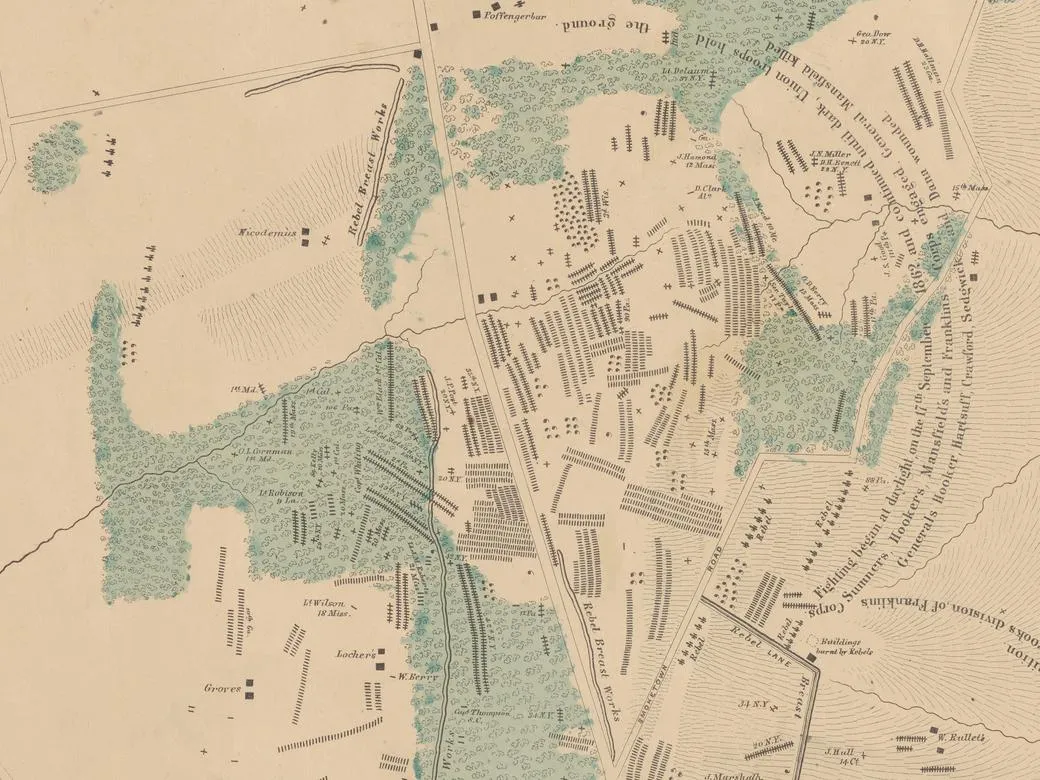
Traces of two other key clashes—the Civil War and World War I—came to light largely by chance. This spring, historian Timothy Smith was browsing the New York Public Library’s digital collections when he happened upon a forgotten Antietam battlefield map that showed the locations of roughly 5,800 graves. Produced by mapmaker Simon G. Elliott around 1864, the tattered document paints the Maryland battlefield “as one vast cemetery,” according to the Washington Post’s Michael E. Ruane. And, in September, a couple hiking in the Alsace region of France stumbled onto an aluminum capsule containing a century-old military message. A Prussian officer likely sent the note, which seemingly never reached its destination, via carrier pigeon around the onset of World War I. Another intriguing discovery linked to the Great War was the wreck of UC-47, a German U-boat responsible for sinking 56 Allied vessels in just 13 months. Archaeologists surveyed the vessel, which sank some 20 nautical miles off the coast of Yorkshire, England, this summer.
2020 also yielded a number of finds linked to World War II. Last month, German divers scanning the Baltic seafloor for abandoned fishing nets spotted a rare Enigma cipher machine potentially thrown overboard to protect the Nazis’ military secrets from the invading Allies. In March, researchers in Scotland discovered an underground bunker used by Winston Churchill’s “secret army” of auxiliary forces. Wartime wrecks either located or excavated for the first time ranged from John F. Kennedy’s PT-59 patrol boat to three American airplanes shot down over the Pacific in February 1944 and the U.S.S. Nevada, which survived Pearl Harbor, D-Day, the invasions of Iwo Jima and Okinawa, and nuclear bomb testing, only to be scuttled during training in 1948.
/https://tf-cmsv2-smithsonianmag-media.s3.amazonaws.com/filer/86/67/86675eae-746c-4761-b4ed-441014c487b5/stellnetz-bergung-enigma_fund-c-florian_huber-submaris.jpg)
Tudor treasures
England’s most notorious dynasty continues to fascinate more than 400 years after its last monarch’s death—a trend borne out by one of Smithsonian’s most-read stories of the year, which detailed thousands of rare artifacts discovered beneath a Tudor manor’s attic floorboards, including Catholic texts, fabric fragments and handwritten musical compositions.
Other recent Tudor finds included the precise location of the jousting yard where Henry VIII almost died in 1536; remnants of an Elizabethan theater in London; and a trove of gold coins inscribed with the initials of Catherine of Aragon, Anne Boleyn and Jane Seymour. Scholars also identified a portrait of a previously unknown sitter as Anne’s older sister, Mary, who was mistress to two kings—Henry and France’s Francis I.
/https://tf-cmsv2-smithsonianmag-media.s3.amazonaws.com/filer/91/94/9194c6ff-c736-4d09-9ce1-033ca4cfaa35/oxburgh_hall_16_scaffolding_goes_up_national_trust_images_ian_ward.jpg)
Religious history
Once venerated as a source of protection, a millennia-old bust of Greek god Hermes later suffered a decidedly ignominious fate: Relegated to a sewer in Athens, the surprisingly well-preserved sculpture only resurfaced in November, when workers found it stuffed into the wall of a drainage duct. In another life, the fourth-century B.C. likeness stood at a crossroad or gate, where ancient Greeks could appeal to its subject, the patron god of travelers and merchants, to ensure their safe passage. Other recently discovered tributes to the Greco-Roman gods include a 2,400-year-old mask depicting Dionysus, the god of wine and ecstasy, and an altar to Pan, god of the wild, embedded in the wall of a church in northern Israel. Worshippers in Turkey likely used the terracotta mask, which was thought to free wearers from their hidden desires and regrets, during rituals associated with winemaking. The altar, on the other hand, may have been repurposed by Christians as a deliberate affront to their pagan peers.
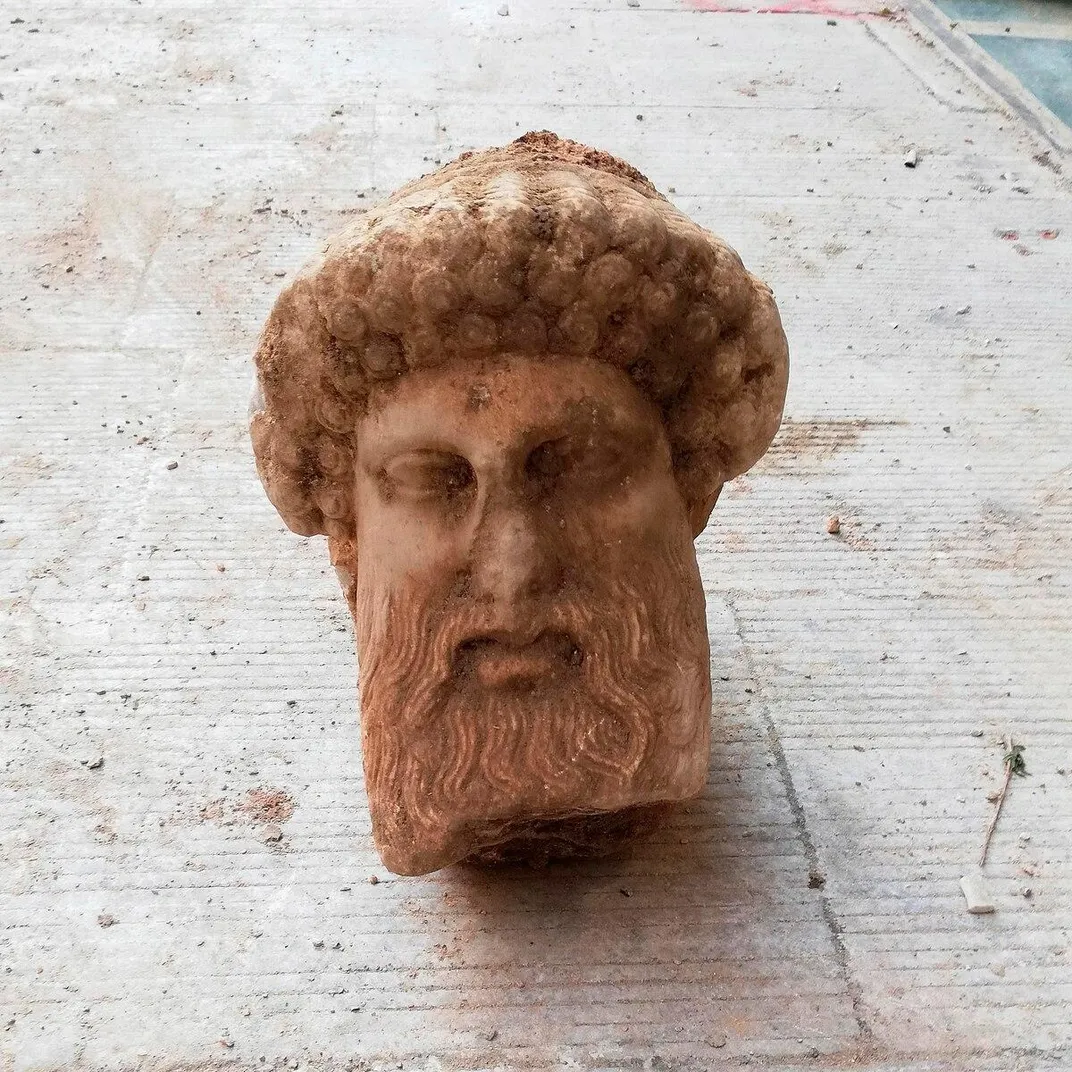
In Norway, archaeologists unearthed the remains of an eighth-century A.D. “godhouse,” or temple honoring the Norse pantheon. Inspired by the large Christian churches of southern European societies, godhouses incorporated architectural elements such as pitched roofs with towers. Previously, researchers had only found these kinds of structures in Sweden and Denmark.
New scholarship spotlighted overlooked chapters in Christian and Jewish history, too. Archaeologists in the contested region of the Golan Heights found the ruins of a fort thought to date to the time of the biblical King David; in Jerusalem, authorities recovered a rare bronze coin minted during the Bar Kokhba revolt (132–136 A.D.), which found the Jewish people unsuccessfully rebelling against Roman occupation.
Experts also revealed text on supposedly blank Dead Sea Scroll fragments and discovered a 2,000-year-old subterranean network carved into the bedrock beneath Jerusalem’s Western Wall. “Most people in ancient Jerusalem lived in stone-built houses,” archaeologist Barak Monnickendam-Givon explained to the Jerusalem Post. “What was the function of this hewn system just under the street level? Was it a house, a storage unit? Something else?”
African American history
This year, in the wake of demonstrations sparked by the killing of George Floyd and other victims of police brutality, long-overlooked black histories began to take center stage. Ahead of Juneteenth, which celebrates the end of slavery in the U.S., the National Archives unveiled a handwritten order informing thousands of enslaved people in Texas of their newfound freedom. Though the Emancipation Proclamation had declared all enslaved individuals free in 1863, Texas slaveholders ignored the measure until General Gordon Granger arrived on June 19, 1865, with a show of force and an official decree banning the institution of slavery.
In addition to archival finds, researchers unearthed an array of physical evidence left behind by black communities. Excavations in Maryland revealed plates, buttons, broken toys and other artifacts linked to a 180-year-old African American commercial and cultural hub, as well as a Jesuit plantation’s 18th-century slave quarters. Farther south, in Williamsburg, Virginia, archaeologists found the 19th-century foundations of one of the nation’s oldest black churches; in Florida, meanwhile, surveys identified lost African American cemeteries beneath a Tampa parking lot and a military base. The former marked the fifth forgotten black cemetery found in the Tampa Bay area in recent months. As Emerald Morrow explained for 10News WTSP, Reconstruction-era “racism and segregation meant African Americans lacked the political and economic power to hold onto their property and sacred institutions like cemeteries.”
/https://tf-cmsv2-smithsonianmag-media.s3.amazonaws.com/filer/82/6f/826f0583-d4fc-465a-bcdf-6611444e3c90/cw_first_baptist_church_2.jpg)
Indigenous North American history
This year, experts from Mexico’s National Institute of Anthropology and History (INAH) excavated several Aztec structures in Mexico City, including a 14th-century steam bath associated with the worship of female deities, a new section of a 15th-century skull tower, and a palace and house constructed for conquistador Hernán Cortés out of the repurposed remains of razed Aztec buildings.
INAH also investigated a shipwreck first discovered off the coast of Sisal in 2017, drawing on historical documents to identify the vessel as La Unión, a steamer used to illegally transport enslaved Maya people during the second half of the 19th century. The ship—the only vessel associated with the trafficking of Maya people found so far—was en route to Cuba when its boilers exploded in September 1861, killing around half of those on board.
/https://tf-cmsv2-smithsonianmag-media.s3.amazonaws.com/filer/49/9c/499cc196-cbd2-463f-9825-75813f054447/inah_photo.jpg)
Non-INAH researchers similarly shed light on the Maya civilization: In March, archaeologists working with the Indigenous Lacanja Tzeltal community located the ancient kingdom of Sak Tz’i’ (Mayan for “white dog”), which had previously been known only through sculptures and inscriptions. Another team in Tabasco used aerial imaging to survey the oldest, largest Maya structure ever found in Mexico—a ceremonial platform measuring more than 4,500 feet long and 33 to 50 feet tall.
To the north, in what is now southeastern Kansas, scientists used similar technology to study a pre-Hispanic “Great Settlement” hidden beneath a ranch. The 164-foot rounded earthwork is one of six ancestral Wichita “council circles” found in the area to date, “and the only one that has not been disturbed,” anthropological archaeologist Donald Blakeslee told Science News.
Finally, in southern Ontario, researchers collaborated with liaisons from nearby Indigenous communities, including Six Nations of the Grand River, the Haudenosaunee Development Institute and the Mississaugas of the Credit, to excavate a Late Woodland Iroquis Village dated to between roughly 1300 and 1600 A.D. Among the more than 35,000 artifacts found at the site were rare carbonized pieces of beans, cooking ceramics, stone tools and animal bones.
Prehistoric peoples
Broadly defined as the period between humans’ invention of stone tools and the development of writing systems, prehistory can be difficult to parse out given the lack of documentation available. Perhaps that’s why physical traces left behind by those who lived thousands of years ago wield such fascination for contemporary observers.
/https://tf-cmsv2-smithsonianmag-media.s3.amazonaws.com/filer/6a/06/6a0696e3-d8a0-440d-9e19-42cb4da8ddad/white-sands-human-footprints-adult-and-child.png)
Fossilized footprints, for instance, offer a tantalizing connection to people of the past: This September, researchers published an analysis of seven 112,000- to 121,000-year-old footfalls in Saudi Arabia. The prints—if, in fact, left by anatomically modern humans—represent the oldest evidence of Homo sapiens’ presence on the Arabian Peninsula. Another set of more than 10,000-year-old footprints in New Mexico track a traveler’s journey across a muddy landscape. The individual, either a small woman or an adolescent boy, carried a toddler for nearly a mile, shifting as they moved the child from one hip to the other.
Other newly revealed reminders of prehistoric communities include a 25,000-year-old structure constructed out of the bones of 60 woolly mammoths (perhaps created “as part of both … ritual and sustenance activities,” as archaeologist Alexander Pryor told Smithsonian); monumental, 4,500-year-old timber circles in Portugal; and a buried ring of pits surrounding Stonehenge’s northeast neighbor, Durrington Walls. “Stonehenge was for the dead, Durrington was for the living,” archaeologist Vincent Gaffney explained to the New York Times. “... [W]hat we are probably looking at was this great big boundary around them probably warning people of what they are approaching.”
Amateur archaeologists
Every so often, amateur archaeologists—defined here as individuals without (or currently working toward) graduate degrees in the field—unearth stunning treasures. In 2020, British teenagers and children wielding metal detectors discovered a pair of rare, 1,000-year-old coins and a late 17th- or early 18th-century English broadsword. An even younger history buff, 6-year-old Imri Elya, chanced upon a Canaanite tablet while hiking with his family in southern Israel.
/https://tf-cmsv2-smithsonianmag-media.s3.amazonaws.com/filer/cb/23/cb23eb85-cca2-49c7-bae5-95cdc323705d/2020_aug22_rustysword.jpg)
Volunteers and interns enjoyed similar luck, spotting such finds as a 2,000-year-old silver dagger likely used in Roman campaigns against Germanic tribes, a trove of 425 gold coins dated to the time of the Abbasid Caliphate (750–1258 A.D.), and dozens of previously unknown historical structures scattered across southwest England. “Searching for previously unknown archaeological sites—and helping to identify places for possible future study—has been not only gratifying but engrossing,” said volunteer Fran Sperring in a statement. “Although it’s a fairly steep learning curve for me … I’m enjoying every minute.”
Students working toward undergraduate or graduate degrees also made significant contributions: At the Rochester Institute of Technology in New York, a trio of sophomores used a self-developed, ultraviolet-fluorescence imaging system to reveal long-lost handwriting beneath a 15th-century text. In Italy, graduate student Vittoria Dall’Armellina identified a 5,000-year-old sword previously mislabeled as a medieval weapon, while in Norway, master’s student Tor-Ketil Krokmyrdal discovered the first Viking-era trading hub found in the country’s northern region.
Shipwrecks
Few archaeological finds fascinate as much as shipwrecks. Consigned to the watery depths after meeting an untimely demise, scuttled ships open portals into the past, testifying to long-ago disasters and, in some cases, offering clues to the future. Consider the Karlsruhe, a German steamer that sank in the Baltic Sea toward the end of World War II. The vessel’s cargo remains largely intact, and some researchers suspect that the sealed chests contain an unparalleled treasure: panels from the spectacular Amber Room, which vanished when the Nazis fled from Allied forces advancing on the city of Königsberg in late 1943. (Coincidentally, another sunken Nazi warship also named the Karlsruhe resurfaced this year off of Norway’s southern coast; first spotted in 2017, the wreck was only identified after a remotely operated vehicle captured photos of its swastika decorations in June.)
Older shipwrecks found in Europe include the Delmenhorst, a Danish warship defeated during a 1644 maritime clash with a joint Swedish-Dutch fleet; a large wooden ship that may be the 16th-century Italian merchant vessel Santo Spirito and Santa Maria di Loreto; and the Gribshunden, a Danish ship that sank en route to Sweden in 1495. Incredibly, archaeologists excavating the Gribshunden found the well-preserved remains of a 6.5-foot-long Atlantic sturgeon in the royal vessel’s pantry.
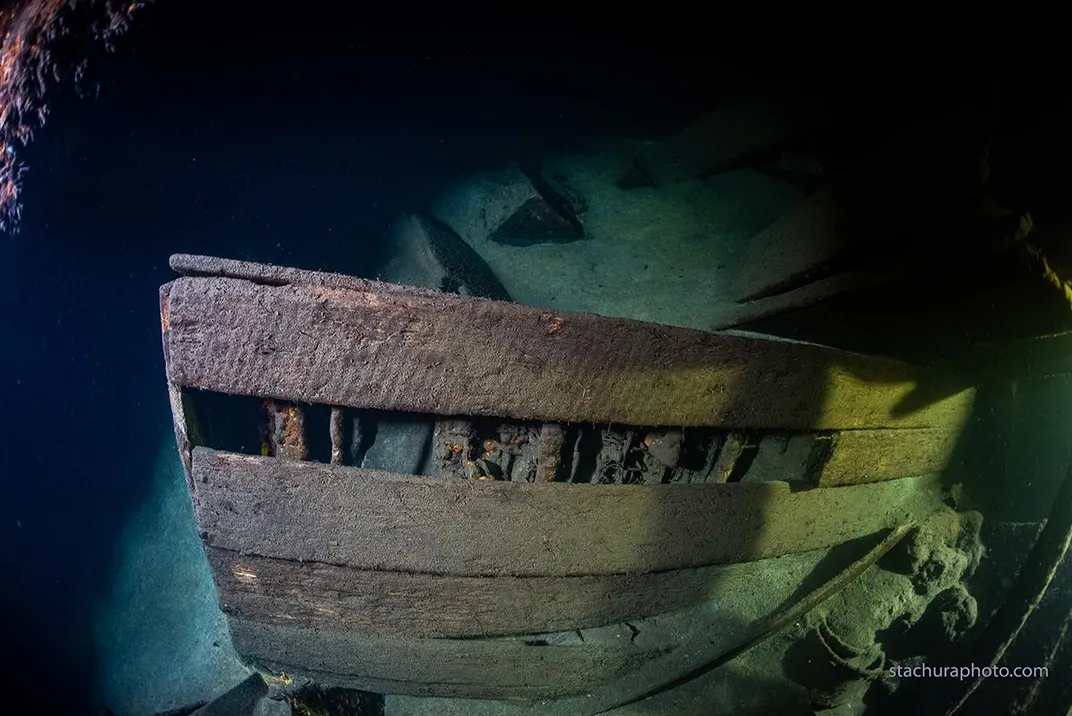
North American shipwrecks discovered in 2020 ranged from the S.S. Cotopaxi, which ran afoul of a storm and seemingly disappeared near the Bermuda Triangle in 1925, to lost pieces of the Phoenix, a paddlewheel steamboat that caught fire and sank off the coast of Colchester, Vermont, in 1819. Divers had found the steamer’s hull in 1978, but its signature wheels remained lost until this August.
Extreme weather also unearthed a number of historic wrecks across the country: At Utah’s Great Salt Lake, a storm with winds exceeding 50 miles per hour exposed remnants of a steel boat likely dated to the turn of the 20th century. Waves and high waters in the Great Lakes, meanwhile, uncovered two vessels: Experts identified one as the early 20th-century schooner R. Kanters, but the other’s identity remains unknown. Finally, in Florida, beach erosion revealed a vessel thought to be a 19th-century merchant ship. “The wreckage there used to be under ten feet of sand,” local Pat Lee told First Coast News. “... We lost it all. … It’s very cool to see the shipwreck. It is very disturbing to see the sand leave our beach.”
/https://tf-cmsv2-smithsonianmag-media.s3.amazonaws.com/filer/0f/a5/0fa5489c-dc4e-495d-a55a-f9854f3ada53/ludington_wreckage_1.jpg)
Magic and the macabre
From the remains of two Vesuvius victims frozen in their agonized death throes to a suspected “witch bottle,” or protective talisman filled with nails, 2020 was filled with eerie finds. Topping the charts in the category of ritual and superstition were “witches’ marks” carved into a medieval English church (the engravings featured spoke-like lines radiating out from central holes, perhaps meant to entrap malicious spirits in an endless maze); sacrificed llamas buried alive by Inca people in the mid-15th century; and the 8,000-year-old remains of a child buried without their arm and leg bones, likely as part of a ceremony, in what is now Indonesia.
Researchers also found instruments, decorations and keepsakes crafted out of the bones of Bronze Age Britons’ relatives. “Even in modern secular societies, human remains are seen as particularly powerful objects, and this seems to hold true for people of the Bronze Age,” scholar Tom Booth told BBC News. “However, they treated and interacted with the dead in ways which are inconceivably macabre to us today.”
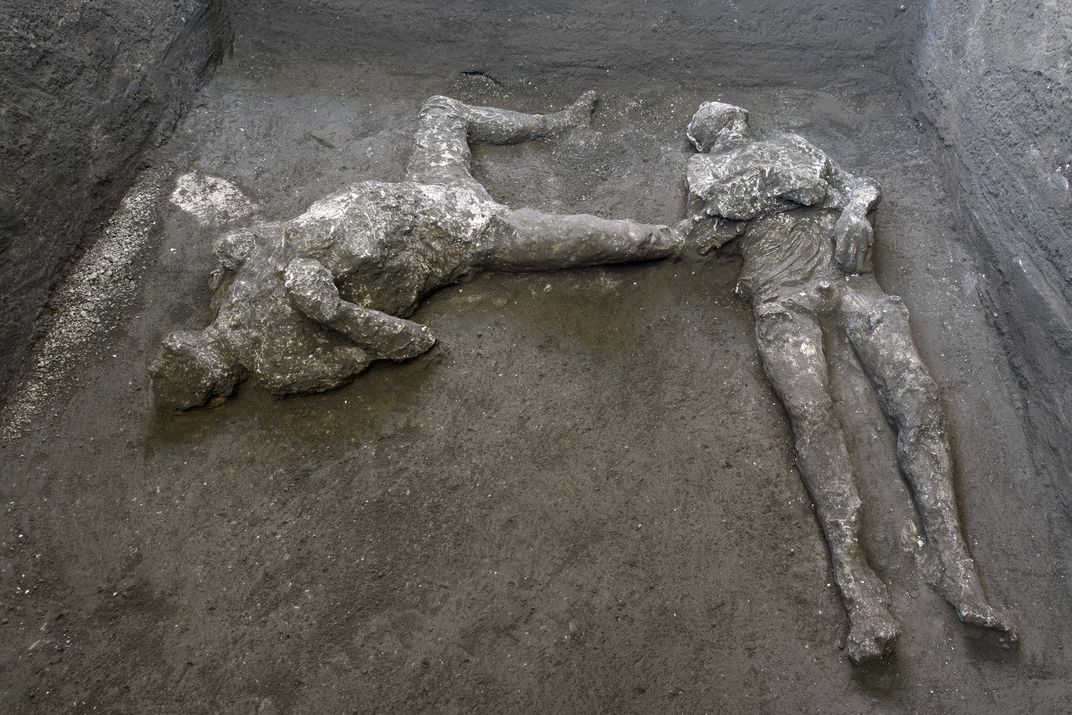
Other decidedly macabre discoveries included the skeleton of a probable Iron Age murder victim who was buried facedown with their hands bound together near the waist, the remains of hundreds of people guillotined during the French Revolution, walls made out of human leg bones beneath a Belgian cathedral, the vitrified brain cells of a Vesuvius casualty, and 42 bizarrely buried skeletons thought to be either executed Anglo-Saxon prisoners or casualties of the English Civil War.
Research conducted this year also revealed the likely cause of death for Takabuti, a young Egyptian elite mummified some 2,600 years ago: The victim of a literal backstabbing, the woman died after an attacker forced a blade into her chest from behind. (Less gruesome examples of ancient Egyptian archaeological finds ranged from a trove of intact coffins unearthed at the Saqqara necropolis to a teenage mummy buried with an ornate selection of jewelry.)
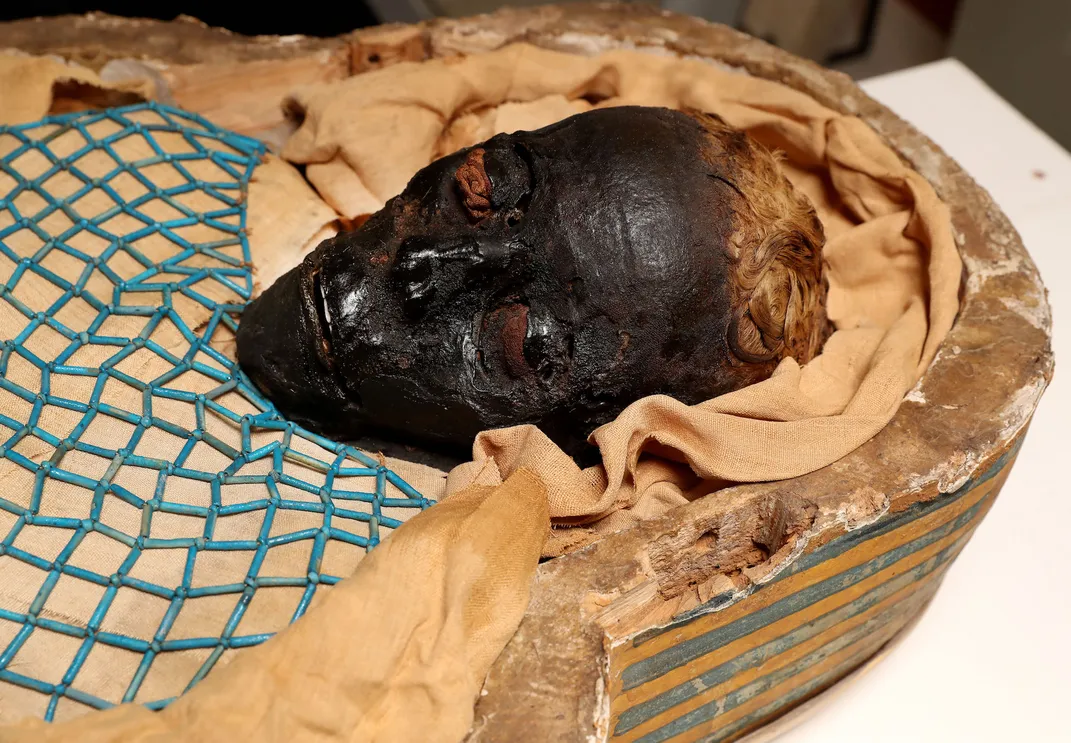
:focal(300x171:301x172)/https://tf-cmsv2-smithsonianmag-media.s3.amazonaws.com/filer/22/d4/22d45b41-6a4c-4b46-b8f5-7bc350239461/fascinating_finds_mobile.jpg)
:focal(622x280:623x281)/https://tf-cmsv2-smithsonianmag-media.s3.amazonaws.com/filer/14/fb/14fbf1f1-41fc-4fbc-af91-48dd548de195/fascinating_finds_social.jpg)
/https://tf-cmsv2-smithsonianmag-media.s3.amazonaws.com/accounts/headshot/mellon.png)
/https://tf-cmsv2-smithsonianmag-media.s3.amazonaws.com/accounts/headshot/mellon.png)